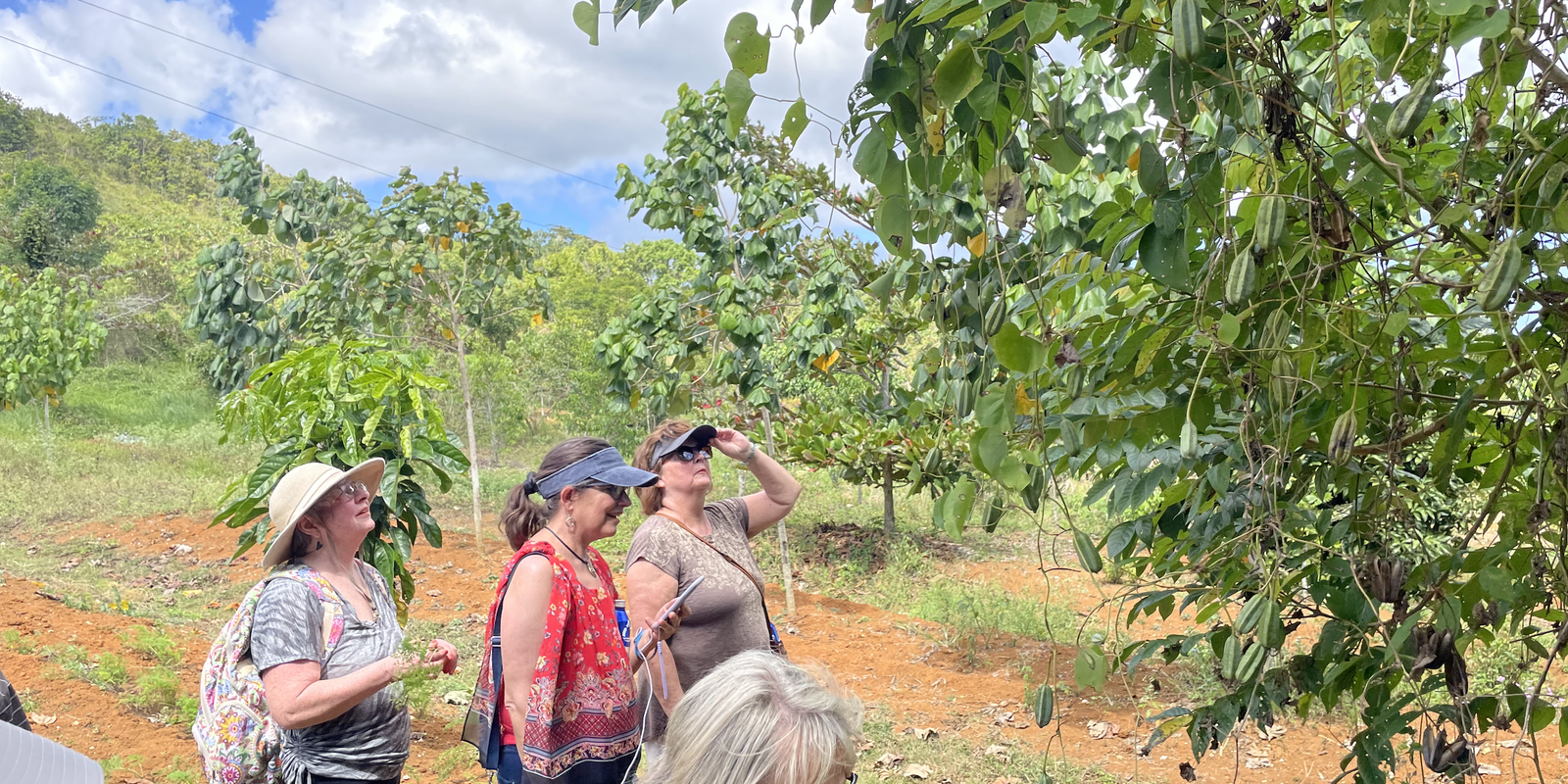Jamaica’s forests are more than scenic backdrops—they’re economic engines that sustain thousands of livelihoods across the island. From the misty peaks of the Blue Mountains to the dry limestone forests of the south, these ecosystems are deeply connected to how many Jamaicans live, work, and survive.
1. Farming That Works With the Forest
A large portion of Jamaica’s rural population relies on farming, and much of that farming takes place in and around forested areas. Many small-scale farmers practice what’s called “forest-edge agriculture”, where they grow crops on the margins of forests or interspersed with native trees.
The Blue and John Crow Mountains, for example, are home to hundreds of coffee farmers who grow Jamaica’s famous Blue Mountain coffee. This type of farming benefits from the forest microclimate—cool temperatures, moisture retention, and shade. It also reduces the need for synthetic inputs, helping preserve soil quality and water sources.
In some communities, agroforestry—the integration of trees with crops and livestock—is being used to both restore degraded lands and increase yields. Farmers grow bananas, yams, cocoa, and timber together, creating systems that mimic the forest and boost resilience to climate change.
2. Harvesting Forest Products Sustainably
Forests supply more than just timber. Non-timber forest products (NTFPs) like medicinal plants, honey, bamboo, pimento (allspice), and charcoal are a major source of income for many Jamaicans, particularly in underserved rural areas.
For example, communities in Cockpit Country have long harvested medicinal herbs and natural remedies passed down through generations. Pimento, which grows naturally in Jamaican forests, is exported and used in food, cosmetics, and aromatherapy.
In some cases, communities are organizing into cooperatives to harvest these resources more sustainably. By setting quotas and replanting what they harvest, they’re working to keep the forest alive for future generations while still making a living today.
3. Ecotourism and Cultural Heritage
Jamaica’s forests aren’t just home to trees—they’re packed with biodiversity, waterfalls, and historical sites that attract both tourists and locals. Ecotourism has become a growing industry, offering income without destroying the land.
Guides, lodge operators, craft makers, and transport providers all benefit from visitors who want to explore forested areas like Holywell Park or the Rio Grande Valley. Tourists go birdwatching, hike trails, visit Maroon heritage sites, and float down rivers—all activities that bring money into remote communities.
Crucially, ecotourism often gives local people a reason to protect rather than cut down forests. A healthy forest brings more tourists, more revenue, and more opportunities to showcase Jamaica’s rich natural and cultural heritage.
4. Jobs in Forest Management and Conservation
Government programs and NGOs have created forest-related jobs that directly support conservation and reforestation. Through the Forestry Department’s National Forest Management and Conservation Plan, locals are trained as forest rangers, nursery workers, and data collectors.
Some reforestation efforts pay workers to plant native species and monitor forest health, which provides steady employment and builds skills. Others help communities develop sustainable business models around forest preservation, such as beekeeping or herbal product development.
5. Climate Resilience and Disaster Risk Reduction
Forests also serve as natural infrastructure. They prevent landslides, reduce flooding, and protect watersheds—services that save money and lives, especially during extreme weather.
When forests are intact, they act as a buffer, absorbing rainfall and anchoring soil. When they’re destroyed, nearby communities face real economic threats: washed-out roads, lost crops, damaged homes. So, protecting forests isn’t just about ecology—it’s about economic survival.
Some Jamaican communities now take part in climate-smart forestry programs, which integrate tree planting with local risk management strategies. These initiatives not only create jobs but also build community resilience to climate change.
Conclusion
Jamaican forests are deeply woven into the island’s economy, especially for rural communities. They provide food, medicine, income, jobs, and protection. But these benefits only last if the forests do. That’s why sustainable management and local participation are essential.
Protecting Jamaica’s forests isn’t just an environmental issue—it’s a livelihood issue. Every tree cut or saved affects real lives. And if managed wisely, the island’s forests can continue to nourish both nature and people for generations to come.









